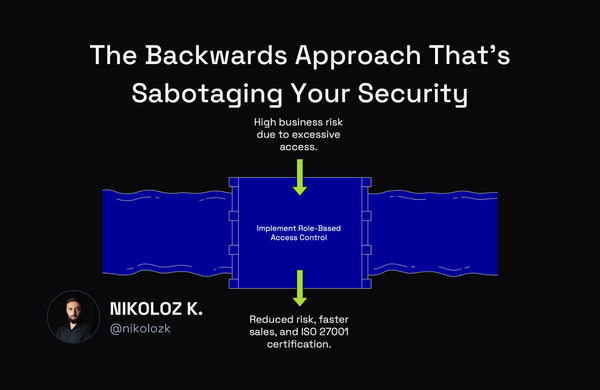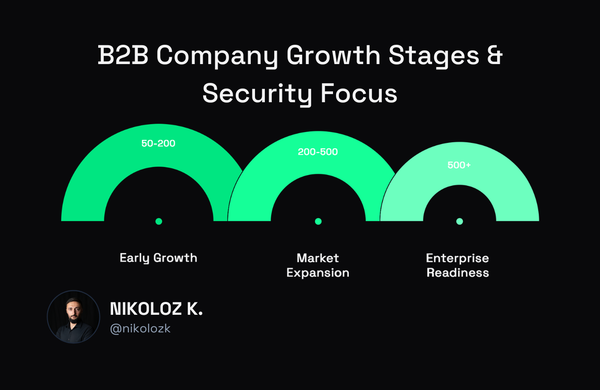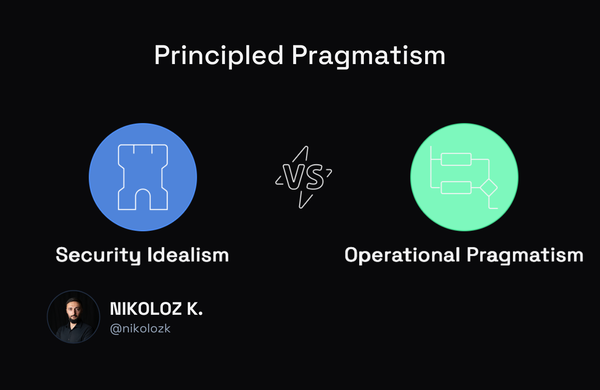10 Key Strategies to Boost Your Organization's Cybersecurity

Nikoloz Kokhreidze
Discover 10 key cybersecurity strategies to fortify your organization. Learn how AI impacts cybersecurity and how to turn challenges into growth opportunities.

- AI Changing the Way We Work: According to a report by Deloitte, AI technology and tools are in the early stages of adoption; the global market is expected to grow by US$19 billion between 2021 and 2025. AI's ability to adaptively learn and detect novel patterns can accelerate detection, containment, and response, easing the burden on SOC analysts and allowing them to be more proactive. This shows how AI is revolutionizing the way we work, particularly in the field of cybersecurity.
- Cyber Attackers Using AI: The same Deloitte report suggests that AI can help organizations prepare for the eventual development of AI-driven cybercrimes. This implies that cyber attackers are likely to leverage AI to carry out more sophisticated attacks in the future.
- Cybersecurity Challenges: Despite significant investments in security technologies, organizations struggle with security breaches. The cost of cybercrime is expected to double from US$3 trillion in 2015 to US$6 trillion by the end of 2021 and grow to US$10.5 trillion by 2025. The average cost of a single data breach in 2021 was US$4.24 million, a 10% increase from 2019. This highlights the growing challenges in cybersecurity and the need for robust strategies to combat them.
The world is moving quickly, technology is rapidly evolving, AI is changing how we work, and cyber attackers are using these new opportunities to target organizations. Therefore, the role of Information Security leaders is more important than ever!
In this article, I will share ten key strategies to fortify your organization's cybersecurity posture:
Establish a Strong Security Policy
Having a security policy is not enough; it must be comprehensive and robust. The policy should address potential threats in all operational domains of the organization. This policy must be thoroughly communicated, understood, and adhered to by all employees, fostering a security awareness culture.
Educate Stakeholders
The human element can be the weakest link in cybersecurity. As such, regular and updated training on cybersecurity best practices for all stakeholders is paramount. Cyber threats evolve rapidly, so frequent training sessions can equip employees to recognize and respond to them effectively, reinforcing your human firewall.
Deploy Security Controls
Deploying multi-layered security controls, including firewalls, Endpoint Detection & Response (EDR) software, Identity and Access Management solution (IAM), and Intrusion Detection Systems (IDS), can protect your organization at various levels. Remember, these tools should be regularly updated to protect against the latest threats.
Monitor & Respond
Implement comprehensive security monitoring solutions, such as Security Information and Event Management (SIEM), to detect unusual activities in real time. Establish playbooks, response mechanisms, and automation to support you in responding to potential threats.
Is Security Blocking Your Next Enterprise Deal?
Let's discuss how fractional CISO services can unlock your pipeline without the full-time overhead.
Conduct Vulnerability Assessments and Pen Tests
Regular vulnerability assessments and penetration testing are vital to your cybersecurity strategy. They identify weak points in your infrastructure, applications, and processes, enabling proactive systems hardening. After gaining confidence in these areas, look into red team exercises.
Implement Data Encryption and Access Control
Robust data encryption and rigorous access controls are essential to protect sensitive data. Encrypt data at rest, in transit, and in use. Always use strong encryption mechanisms such as AES-256 and TLS 1.3. This ensures that only authorized individuals can access specific data, reducing the risk of data breaches.
Utilize Multi-factor Authentication (MFA)
Multi-factor Authentication (MFA) adds an extra layer of security, reducing the risk of unauthorized access. It should be applied not only to your organization's systems but also encouraged for employees' personal accounts. Use security keys for the highest security; if unavailable, you can utilize authenticator apps such as Google/Microsoft Authenticator. Remember that SMS is the least secure method since SIM cards can be easily cloned, giving cyber attackers access to the phone number's text messages and allowing them to access MFA codes.
Develop a Comprehensive Disaster Recovery Plan
Prepare for worst-case scenarios with a comprehensive disaster recovery plan. This should include business continuity strategies that ensure a quick rebound from major security incidents with minimal disruption. Make sure your Disaster Recovery Plans (DRP) and Business Continuity Plans (BCP) are regularly tested, documented, and improved based on the findings from the test. Planning does not matter if you do not put it to the test.
Establish Incident Reporting and Response Processes
Streamline the process for reporting and responding to security incidents. Clear communication channels for incident reporting and predefined response protocols can drastically reduce reaction time and potential damage. Equip your analysts, engineers, and threat hunters with the tools, workflows, automation, and knowledge to combat modern threats.
Zoom Out and Repeat
Everything you did before this step allows you to tackle on-point problems, but as a cybersecurity leader, the most significant value you can provide is your ability to zoom out. Look at previous activities, get high-quality data about the type of incidents, threats, and response times, and understand your organization's heartbeat and data flow. Look at the bigger picture to see the actual problems; after that, prioritize those problems, devise strategies to tackle them, and execute with your team.
As cybersecurity leaders, we must provide robust, comprehensive security to our organizations. Embracing these strategies, we can build an environment of resilience and trust, strengthening our defense against potential threats.



